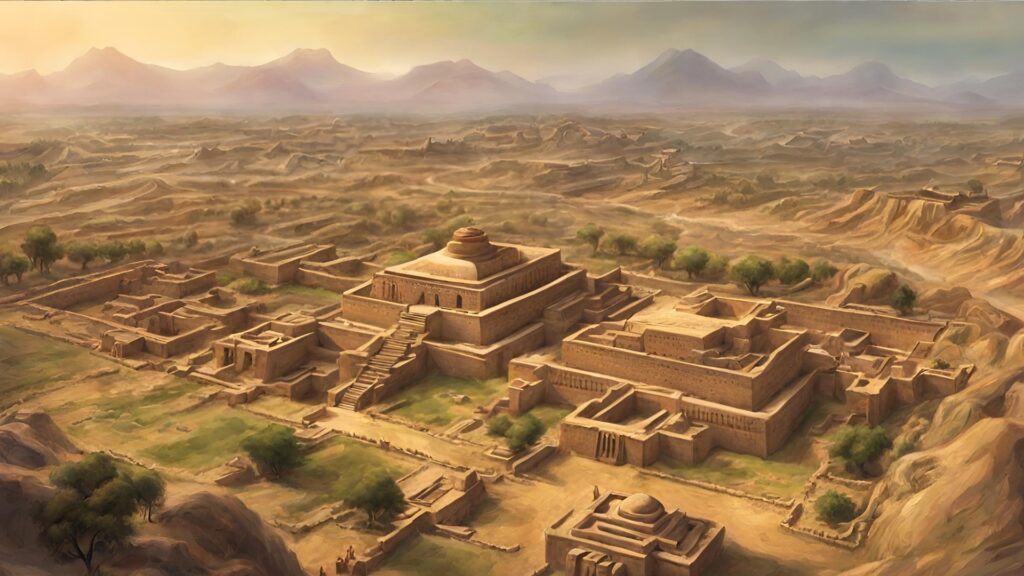
Freedom, at its core, is the profound knowledge that if we were dropped in the heart of nature, we possess the innate ability to work in harmony with it, to adapt, and to thrive. In the eyes of our ancient ancestors, building shelter was not merely an act of necessity; it was an intrinsic endeavor to enrich one’s freedom. They understood this timeless truth, weaving their shelters into the very fabric of their surroundings, with the Earth’s resources, leaving structurally sound evidence of wisdom that speaks to us across the ages. The timeless lessons that stand in the art of natural building, from the sands of ancient Egypt to the cliffs of Mesa Verde, their architectural marvels were not only monuments to human ingenuity but also expressions of freedom in its purest form. These builders of old held a profound reverence for the land that was mirrored in their construction techniques and their use of sustainable, locally sourced materials, reflecting a glimpse into their past lives through the structures that still remain. From cob to adobe, thatch to stone, and bamboo to earth, across time and cultures, the secrets of ancient techniques unveil themselves, fostering a sense of freedom, sustainability, and harmony with the Earth.
The Wisdom of Ancient Building
From the monumental pyramids of Egypt to the cliff dwellings of Mesa Verde, the ancients left behind a legacy of architectural marvels. But beyond their grandeur, these structures often embodied a deep understanding of the land and a harmonious relationship with the environment. Ancient builders relied on sustainable, locally sourced materials and employed ingenious techniques that honored the Earth’s resources.
Primitive Building Strategies
The geographic remnants of architecture offer profound insights into the human quest for freedom and self-sufficiency. From the timeless simplicity of cob construction to the resilience of adobe and rammed earth, the spiritual connection of thatch roofing, the enduring strength of stone masonry, and the sustainable ingenuity of bamboo construction, each method carries with it a unique legacy of harmonizing with nature. These strategies reflect the freedom that comes from low-cost, locally sourced materials, and the mastery of skills for survival. The principles of these building techniques have transcended generations, standing the test of time to offer valuable lessons for achieving harmony with the Earth while creating to shelter a life of greater freedom.
Cob Construction: Sustaining Freedom with Earth
Cob construction, with its origins lost in the mists of time, is a testament to humanity’s resourcefulness and connection to our planet. This ancient building technique embodies the essence of freedom through self-reliance. Cob is often created from locally sourced materials, a blend of clay, sand, straw, and water, making it a low-cost and sustainable choice for shelter. Finding the correct balance among these elements is key. Too much clay can lead to cracking as it shrinks during drying, while too much sand can weaken the structure. The right mix should feel pliable, like well-worked dough, allowing you to form it easily without it slumping or falling apart. Its thermal mass properties provide comfortable living spaces, keeping interiors cool in the summer and warm in the winter. The wisdom of cob building has not only endured but experienced a resurgence in modern sustainable architecture.
Adobe and Rammed Earth: Building with the Earth’s Embrace
Adobe and rammed earth construction, powerfully expresses freedom through self-sufficiency with techniques relying on the Earth itself as the primary building material. Their durability and thermal performance are legendary, showcasing sun-baked adobe bricks of the American Southwest to the rammed earth structures of ancient China, these methods reveal the enduring beauty of earthen architecture. A typical base mix might involve one part clay-rich soil to one part sand and a small amount of straw for added tensile strength. Begin by excavating and preparing the site, shaping your foundation, and creating a level surface. Form adobe bricks by compacting your mixture into molds or by hand, then sun-dry them until they are firm and stable. As you lay each brick, use a mortar mixture of the same adobe material to bond them together. Adobe structures offer excellent thermal mass properties, maintaining comfortable indoor temperatures, and the durability of properly cured adobe ensures your shelter’s longevity. The principles that make adobe and rammed earth construction sustainable, resilient, and timeless, offer insights into how we can harmonize with the environment and achieve true freedom through shelter.
Thatch Roofing: Nature’s Blanket for Shelter and Freedom
Thatch roofing, a tradition spanning continents and millennia, reflects the intimate connection between human habitation and the natural world. Its core materials—bundles of dried vegetation such as reeds, straw, or palm fronds—embody the essence of low-cost, locally sourced building. Beyond its functional purpose of providing efficient insulation, thatch connects inhabitants to the Earth in profound ways. As we explore African, Asian, and European thatching traditions, we discover that the freedom thatch roofing offers isn’t just physical comfort but a spiritual connection to nature. To begin, you’ll need a sturdy roof frame or support structure. Lay a base layer of thatch bundles or “thatch laths” horizontally along the roof frame, securing them in place with twine or wire. Overlapping the bundles helps ensure water resistance. Continue adding layers of thatch, stacking them in an overlapping fashion, and compressing them to create a dense, weather-resistant surface. Finally, trim and shape the thatch to achieve the desired roof profile. Its time-tested elegance reminds us that the harmonious coexistence between humanity and the environment is a wisdom as old as shelter itself.
Stone Masonry: Crafting Freedom with the Earth’s Bones
Stone masonry stands as a testament to human craftsmanship and resilience, echoing with the spirit of freedom found in self-reliance and resourcefulness. Ancient builders hewed their structures from the Earth’s bones, creating enduring monuments of strength and beauty. From the grandeur of Machu Picchu’s stone walls to the precision of Inca stone bridges, these stone marvels continue to inspire. Building with stone masonry is a timeless craft that begins with the careful selection of durable stones, typically of uniform shape and size. To start, lay a solid foundation to support the weight of the structure. Using mortar as a binding agent, strategically place and stack the stones, ensuring a secure fit while leaving minimal gaps between them. As you progress, employ the principles of balance and distribution of weight to create structurally sound walls or structures. Mortar is used both to secure the stones in place and fill any remaining gaps. The skillful arrangement of stones in this craft not only results in resilient and enduring structures. Stone masonry reminds us that the Earth itself can be a source of freedom and shelter when we work in harmony with its enduring elements.
Bamboo Construction: Nature’s “Green Steel” for Modern Freedom
Bamboo, often hailed as the “green steel” of the plant world, has served as a vital building material in Asia and Latin America for centuries. In its rapid growth and remarkable structural strength, we find the embodiment of freedom through sustainability. Bamboo’s versatility in architecture offers a low-cost and option for constructing shelter, making it a sustainable choice for the modern era. To begin, select mature bamboo culms, which are the sturdy, straight stems of the bamboo plant. Cut the culms with precision, ensuring clean and level ends. Bamboo’s natural segments can be used as a guide for creating uniform lengths. Once you have your bamboo pieces, treat them to prevent insect infestations and fungal decay through techniques like smoking, boiling, or applying preservatives. Depending on your project, you can use bamboo as columns, beams, or even as a structural framework. The natural strength and flexibility of bamboo make it an excellent choice for construction. Secure the bamboo components using appropriate fasteners and connectors. Whether you’re building a shelter, furniture, or other structures, bamboo’s versatility and sustainability offer a path to both functional and environmentally conscious design. Bamboo’s enduring relevance demonstrates how the ancient wisdom of building with nature’s offerings can inspire us to create greater freedom with harmony.

Reconnecting with Our Natural Roots
While our ancestors had fewer technological resources, they had a deep respect for the Earth and a commitment to sustainability that can inspire us today. Drawing insights from these ancient building strategies from eco-friendly design principles to sustainable building for harmony and a free future. Natural building isn’t just about constructing walls and roofs; it’s about reconnecting with the Earth and embracing the freedom that comes with living in cooperation with our planet. As we journey through the wisdom of ancient builders and rediscover their techniques, we’re reminded that true freedom isn’t just about the absence of constraints; it’s about having the resolve and resilience to survive the world around us. In our pursuit of freedom, both individual and collective, we can find inspiration in the natural building methods of our ancestors by learning from their timeless wisdom to craft a future where our homes and communities are a soul-nourishing, a testament to the enduring spirit of freedom through the ages.





